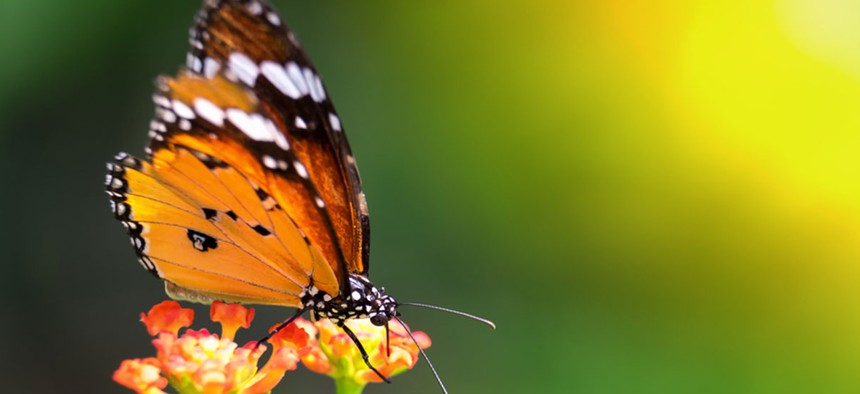
Shutterstock.com
Mexico, Canada, and the U.S. Created a 'Flyway' to Save the Monarch Butterfly, and It's Working
These vital pollinators winter in Mexico and California, then head north as far as Canada.
At the North American Leaders Summit on Wednesday (June 29), Canadian prime minister Justin Trudeau, US president Barack Obama, and Mexican president Enrique Peña Nieto—AKA “the three amigos”—talked about trade, Trump, and immigration. It was a friendly meeting, and Peña Nieto in particular seemed pleased to note progress on a particular kind of migrant: the Monarch butterfly.
Monarchs are the only butterflies that migrate in two directions, flying south to spend mild winters in Mexico and California, then heading north to lay their eggs and continue as far as Canada. The multi-generational migration—a Monarch’s total lifespan is only about six to eight weeks—has inspired wonder in authors and filmmakers alike. The world’s farthest-migrating butterfly, it has been recorded traveling up to 265 miles in a single day.
In 2014, scientists and activists alike panicked after Monarch population numbers reached record lows the year prior. Since then, North American leaders have been cooperating to save the species. Obama’s Pollinator Health Task Force established a 1,500 mile “flyway”by rehabilitating nectar-producing plants and larva-friendly milkweed and educating residents along the migration path between Mexico and Minnesota. Additionally, US Fish and Wildlife is working with the Canadian and Mexican governments to “restore and enhance” butterfly habitats (pdf, p.38).
Some of those habitats—including overwintering sites in Michoacán and the state of Mexico—are key spots for monitoring Monarchs’ progress. Rather than attempting to count individual insects, the World Wildlife Foundation keeps an eye on populations by measuring the area covered by butterfly colonies: About 225 million butterflies (p.3) would fill Monarch colonies over six hectares (14.8 acres).
According to Peña Nieto’s remarks on Wednesday, the trilateral effort is working. The World Wildlife Foundation has seen a sixfold increase in the area covered by colonies since 2014, from 0.6 to 4.1 hectares. Nieto said he expects the area to more than double by 2018.
When Obama took the mic after Nieto, he touched on issues including refugee crises, landmines, and political prisoners. Then he added:
“And by the way, Enrique, I love the story about Monarch butterflies. They’re not just any species, they are spectacular.”






